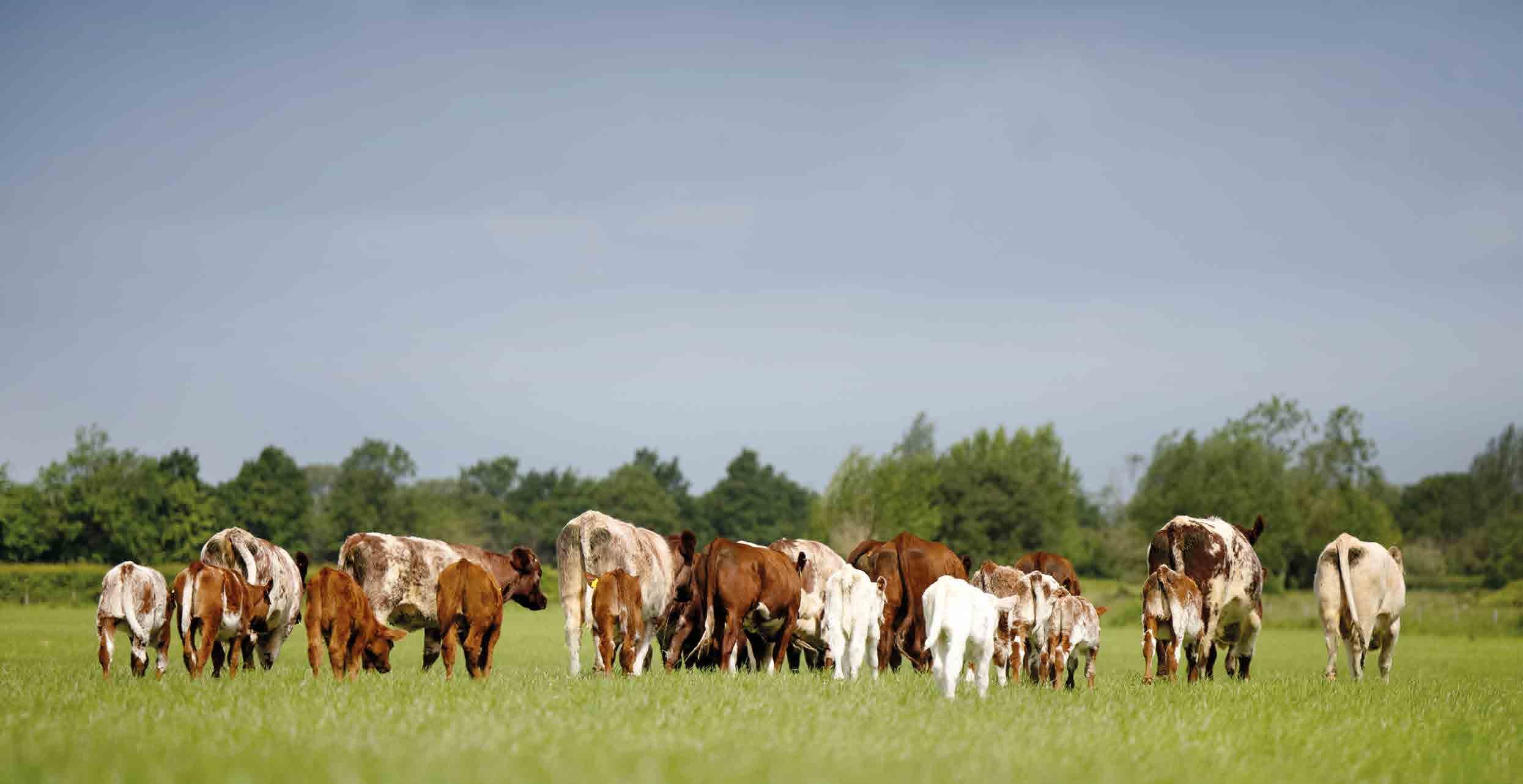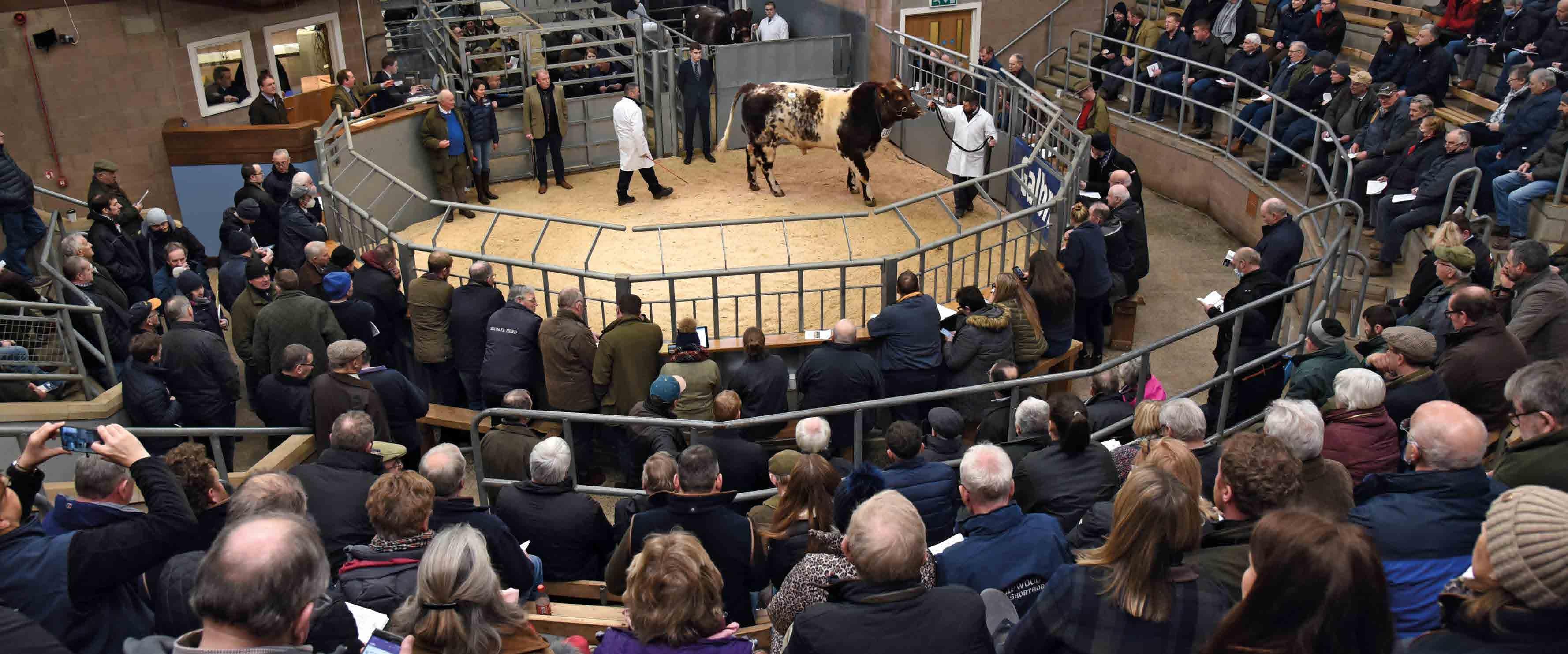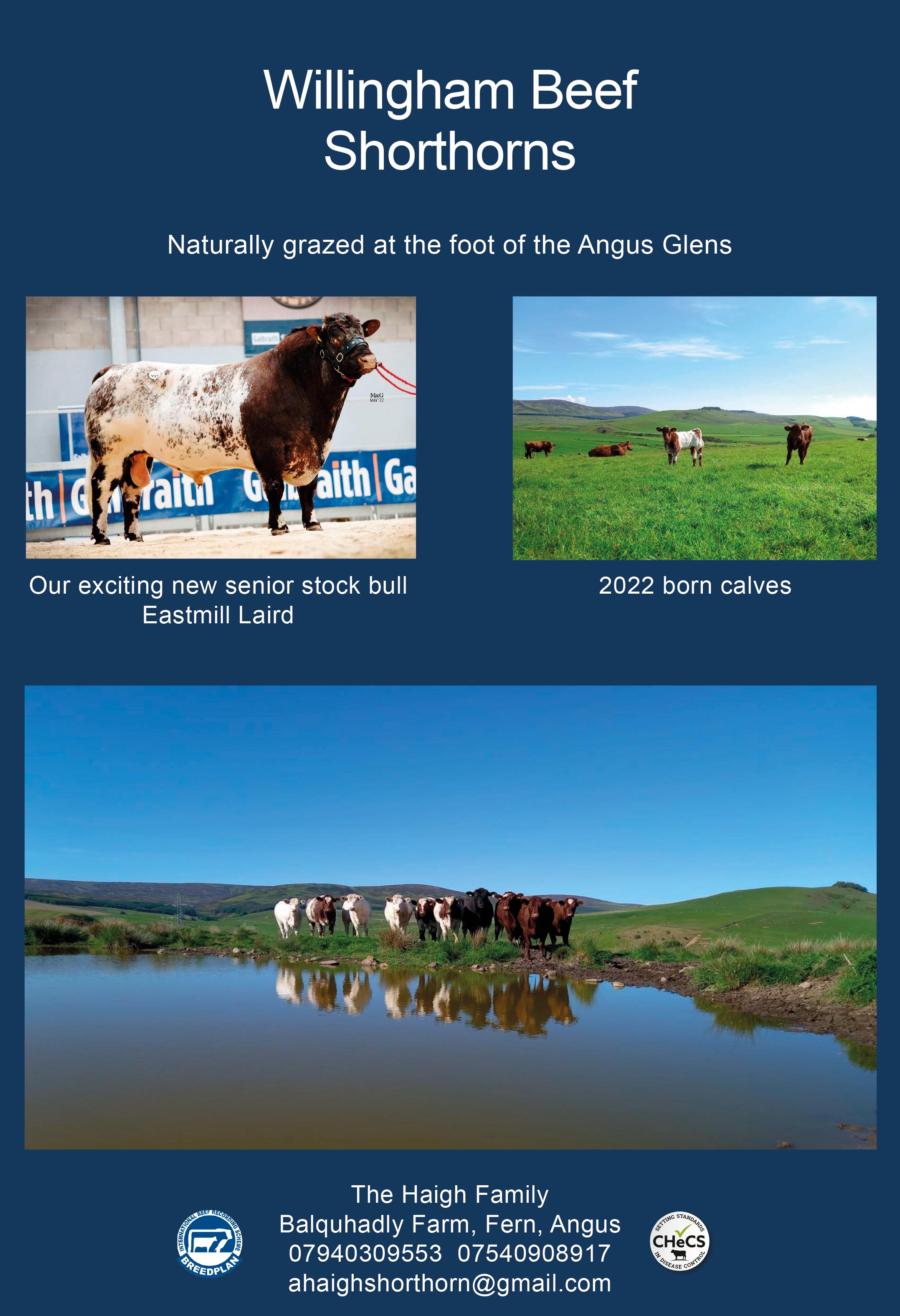
8 minute read
Committee reports
Breed Development Committee, report from committee chair Shona Calder
This committee is made up of five directors. The committee’s remit as the title suggests, is to look at anything that can be of benefit to the breed. Meeting four times a year, topics discussed include those detailed below and where appropriate the committee provides feedback and recommendations.
Advertisement
Health schemes and testing
Recently as members may be aware CHECS wanted to change the rules on Johnnes testing. This would have led to members in TB1 areas being disadvantaged when trying to achieve Level One status.
Disease issues
At the moment the concern is Neospora and the impact on the breeding herd. To that end the committee has helped provide articles to help members understand the disease and how to manage it and hopefully eradicate it.
Performance recording
EBVs are a tool to help with selection of profitable cattle, the generation of EBVs requires accurate data and lots of it. The breed needs more members to record as ultimately it is for members’ benefit. The committee looks at whether certain traits are more important to the breed and how to help members get the most out of Breedplan.
Breed Classification
Some herds will already be classifying and, going forward, these scores will be able to be incorporated with the EBV for that animal, thus helping to give a better picture of that animal.
For those of herds not classifying it is a very worthwhile practise. Classifiers are very adept at explaining their scores and it helps you to see the animal in detail rather than just `a cow’. In turn when you see the score for your herd it will show where you need to make improvements.
DEFRA rules for import and export of cattle semen and embryos.
The committee has also pushed ahead with webinars for pelvic measuring and fitness scoring of cows and breeding condition.
These are just some of the areas the committee has worked on to help promote the health and productivity of Beef Shorthorn cattle.
The finance committee exists to provide oversight and governance assurance on the Society’s finances and associated risks to the Society and is essential to maintaining sound governance and financial probity.
In the last year, none of us need reminding what a rapidly changing time world we have experienced. It has required a careful balance of the needs for innovation and support to members with a responsible and prudent approach. In short, we need to keep a reserve of funds in place to carry us through an uncertain future while developing the breed and our members’ interests.
In respect of funds already in hand, these exist as either our operating surplus (income over expenditure) or reserve funds (either between those earmarked for development or those for investment).
Society income mainly derives from membership fees and from transactions covering herd names, cattle registrations/transfers, shows and sales. There is some income from merchandise and individual fund-raising activities (donors, auctions etc.,) plus we have an annual grant from Morrisons in respect of the Morrisons beef scheme.
Expenses are mostly to cover the costs of providing the key services provided by the Society plus additional development activities, such the member development days. The Society currently covers all cow classification costs for one visit.
In 2020-21 we experienced a slowdown in sales fees and transfer registrations due to sales being limited because of Covid-19 restrictions, but in 2021-22 we saw an improvement with an upturn in registrations, resulting in an increase of £9000, and sales commission, which rose by £7000. Total income on the year amounted to £455,160 which was offset by £430,340 expenditure to deliver an operating surplus of £24,820.
In respect of reserve funds, invested funds yielded a healthy return up to 2022 due to improved investor confidence in markets and significant ‘bounce back’ growth following the pandemic. That all changed in February 2022 following the invasion of Ukraine and we saw some of the gains achieved in 2020-21 undone to the point that a net loss occurred of £82,700 against August 2021. In summary this must be accounted alongside our operating surplus to give a £57,700 loss.
It is becoming apparent that there is a challenging year ahead. It is important to respond quickly to changes that risk potential loss. The Society will want to take the opportunity to increase revenues, focusing on unrealised charitable contributions and legacy donations from members.
Keeping members’ interests foremost, we will need to benchmark registration and membership fees against comparable Societies to ensure these cover the cost of providing those services as efficiently as possible. The Society will continue to offer and grow member benefits that support our interest in the Beef Shorthorn breed, from the development days to information webinars, and including a whole range of Society social and commercial opportunities. Provision is being made to support better marketing and development plus implementing the updated ILR2 during the coming year.
Judges, Shows and Sales Committee, report from committee chair Mark Severn
Made up of seven directors, the judges, show and sales committee looks after, as the name suggests every aspect of Society business concerning judges, shows and sales.
One of the committee’s main tasks is to maintain a shows and sales matrix for the next three years, helping avoid repetition of judges in geographical areas.
A major objective this year has been to establish a youth development fund to enable the Society to hold days specifically for younger and new members where workshops will be held on cattle preparation, including halter training, clipping and ring craft.
Earlier in 2022 the committee organised a judges’ seminar day kindly hosted by Alistair Gibson and run by Tina Russell where prospective judges were given guidance on what is expected of them in the show ring. A new direction being taken in helping to ensure fair play within the Society will, in future see the Society sending out a field team to carry out random farm inspections to check animals, this initiative is also being done by other cattle societies.
I have had a busy year representing the breed at many shows and sales, the highlight being the bi-centenary and National Show held at The Great Yorkshire Show attracting 140 Beef Shorthorns an amazing achievement by all the breeders who turned out for this. A wonderful display of cattle for the world to see.
If anybody has any suggestions or matters they would like the committee to look at please do not hesitate to contact myself or any committee member.
Finally, I would like to take this opportunity to wish all members success with their cattle and to thank the committee for their help and support this year and looking forward to 2023.

Marketing and Communications Committee, report from committee chair Alfie Shaw
How the Beef Shorthorn breed is perceived is a priority for the Society. In February I was privileged to accept the position of chair of the marketing and communications committee. I picked up the reins at the start of the breed’s bicentenary year, the perfect time to consider whether the marketing for the Society and breed could be improved.
Marketing is something that attracts strong and sometimes conflicting opinions within the membership. One of the first tasks was to oversee the delivery of an objective review.
It was important to take stock of where the Society was, assess what could be done better and identify where future opportunities might arise. Working with an external contractor to undertake an independent review of marketing activity has given clarity and direction. It has also given the Society refreshed messaging, focusing on the sustainability and longevity of the breed.
The review is - in many ways - just a starting point for future activity. There is so much more still to be done, and what we have planned for the year ahead is exciting.
I would like to thank the marketing committee for their work in informing the review – Tina, Pamela, Fraser, Gerrard and, of course, previous marketing chair, Sally. Their insight, understanding of the breed, and breadth of experience, has been hugely valuable in informing this important piece of work. I’d also like to thank Clive in particular for working alongside the external consultants to facilitate a robust and comprehensive review.
To support the bicentennial celebrations some new literature and display stands were produced for use at shows and events during the summer and autumn. While this is very much just a starting point, the feedback so far has been positive. Marketing collateral like this isn’t just about the Society, it’s also about supporting industry partners like the procurement teams at Morrisons and Glenarm. The new literature and photography highlights and promotes these important routes to market, and, hopefully, the new leaflets will help raise awareness of the huge opportunities that Beef Shorthorn presents.
One of the things the review highlighted was how under-resourced the Society has been in this area. As a Board we’ve agreed that marketing is an increasingly important priority, and I look forward to introducing more capacity in this area.
Of course, marketing doesn’t happen in a vacuum. The review also highlighted the need to be more strategic in our activities and more outward looking. Society marketing planning will start to dovetail closely with breed development, to open up business opportunities to help deliver the Society’s longterm objectives. This year’s introduction of member development days will be a critical part of this.
A lot has been achieved in the past year, but there’s still lots to do and we need your help.
We are looking for a steady stream of success stories, examples and case studies where Beef Shorthorn has made a difference to farm enterprise performance and profitability. We know the Beef Shorthorn breed is ideally suited for the direction of travel for the industry. The more real-life examples we can gather to demonstrate this, the more we can open up opportunities for the breed and our membership.
Marketing isn’t just about adverts and press coverage for the sake of it. It’s about making the Society future fit by showing why Beef Shorthorn is the right choice for farmers, for finishers, for industry partners and for consumers. We need you to help us amplify our voice. Let’s work together to make sure Beef Shorthorn is the natural choice for a sustainable future in the industry.











